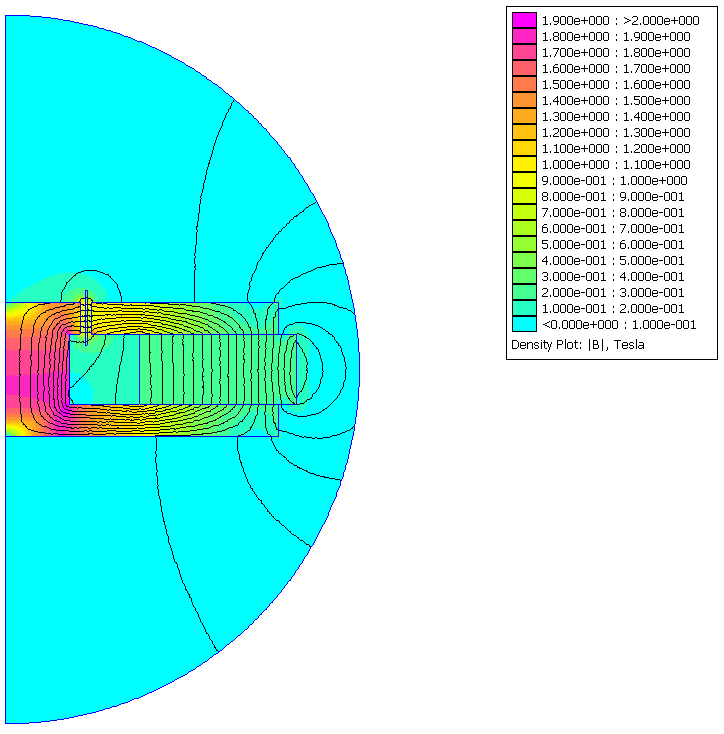I've don't know of him. Coincidentally someone posted this link today,
YouTube others here might find his view points interesting
That's the Danny I've been emailing. He posted a different video recently which prompted this placement decision.
Hi All - don't laugh, but where EXACTLY is the voice coil in my fostex 208ez (sigma)?! Please see attached image. Is it 1, 1&2, 1-3, 1-4, 2&3, 2-4, 3&4 etc?!
2.
I watched with interest SJ, although I found it rather academic as I'd never consider employing two tweeters to cover the same frequency range.YouTube others here might find his view points interesting
If you are up-firing, phase alignment goes out of the window, because the physical alignment and radiating points are inherently different. You are not actually aligning the acoustic centres on the Z axis (front-rear plane) relative to the listening position. You do realise this?
The purpose of up-firing (or side, rear or any plane other than that the rest of the drive units are mounted on) tweeters is to increase the ratio of reflected to direct radiation in the room. You understand what that does to phase? If so, you will understand why using a given physical point, assuming it to be the acoustic centre of the drive unit (itself a nebulous concept; you really need to measure the drivers to establish its location at any given frequency) and worrying over milimetric precision in mounting the tweeter to adhere to that is a waste of time. Yes, adjusting placement makes a difference and nobody who knows anything about speakers would claim otherwise, but you are not getting an acoustical centre alignment except for a tiny portion of the off-axis energy direct from the tweeter, and likely not even that given the variation in positioning & distance between the drivers. Since Danny Richie is not a fool, I can't imagine him claiming otherwise.
The purpose of up-firing (or side, rear or any plane other than that the rest of the drive units are mounted on) tweeters is to increase the ratio of reflected to direct radiation in the room. You understand what that does to phase? If so, you will understand why using a given physical point, assuming it to be the acoustic centre of the drive unit (itself a nebulous concept; you really need to measure the drivers to establish its location at any given frequency) and worrying over milimetric precision in mounting the tweeter to adhere to that is a waste of time. Yes, adjusting placement makes a difference and nobody who knows anything about speakers would claim otherwise, but you are not getting an acoustical centre alignment except for a tiny portion of the off-axis energy direct from the tweeter, and likely not even that given the variation in positioning & distance between the drivers. Since Danny Richie is not a fool, I can't imagine him claiming otherwise.
Last edited:
What's stereo?You don't listen to stereo?
Attachments
The interference pattern is stationary in space only when both transducers are emitting identical wavelengths as in tests using a signal generator.psychoacoustic smoothing
When reproducing a real world music signal the transducers emit many different frequencies simultaneously.
Music therfore produces a complex and ever changing interference pattern which my ears manage to integrate into one whole, unbroken state.
That's what I would call 'psychoacoustic smoothing'.
The voice coil is central to the speaker.
If goes from top of 1 to bottom of 1, to top of 4 to bottom of 4 approx.
You mean 1-4?
"Averaging" is probably a better word. Comb Filtering, Acoustical Interference, & Power Response in Loudspeakers | Audioholics
You mean 1-4?
Its not only from 1-4 deep but from top 1 to bottom of 1 high.
Its not only from 1-4 deep but from top 1 to bottom of 1 high.
Thanks, yeah, that's why I drew it that height, consistent with the diameter shown on the manufacturer's fact sheet.
Thanks for the link SJ!
It makes the distinction between comb filtering, caused by the superposition of direct and reflected sound in the room, and the acoustical interference between multiple drivers in the same cabinet - and that the two terms are commonly lumped together.
However, the mathematical analysis (understandably) relies on the reproduction of individual frequencies and not real life music signals.
I don't deny the physical effect exists, but belong to the school of it's not audible when playing music.
Certain music can reduce me to tears, but that's because I am concentrating on the music, not because I'm agonising over comb filtering.
It makes the distinction between comb filtering, caused by the superposition of direct and reflected sound in the room, and the acoustical interference between multiple drivers in the same cabinet - and that the two terms are commonly lumped together.
However, the mathematical analysis (understandably) relies on the reproduction of individual frequencies and not real life music signals.
I don't deny the physical effect exists, but belong to the school of it's not audible when playing music.
Certain music can reduce me to tears, but that's because I am concentrating on the music, not because I'm agonising over comb filtering.
Last edited:
I trust Danny's advice and will be aligning as closely as possible with the voice coil...
Some good cutaways showing the VC centered at position one: speaker driver cutaway - Google Search
Re alignment; for the record, it was found back in the mid '30s that echoes from tap dancing on a tabletop disappeared from the playback after aligning the drivers of the large bass & treble horns, which was later found that they only needed to be within ~1/3 WL of the XO point, ergo plenty good enough, just not acoustically aligned.
TTBOMK Altec was the first speaker manufacturer to officially publish this method of alignment and AFAIK it wasn't until the advent of [cheap] digital time delay did prosound quit using this method.
So while Danny isn't technically correct [and would be very surprised if he doesn't know it] since it's normally where the VC attaches to the diaphragm on point source drivers, he's plenty close enough by centering the tweeter over the woofer's VC center since this gap is normally < 1/3 WL of the XO point.
GM
For those interested in the magnetic flow inside a speaker magnetic system:

Some details:
1) only right half is shown, since left is symmetrical.
2) notice the job of the magnetic circuit: top plate + bottom plate + pole piece, is to focus and concentrate the magnetic flux from the large ceramic ring into the tiny gap.
It does a pretty job at that, getting an intense and homogeneous field there, but lots of field lines get lost "elsewhere" where they do no good.
So when somebody brags sticking a screwdriver to magnet back tell him: "oh, but that´s the useless field )
)
The gap lies between top plate and top area of polepiece, which corresponds to area (2) of the original diagram by the OP.
The voice coil obviously lies there, where flux density is highest.
Its winding length goes from "same as top plate thickness" which attains highest efficiency but higher distortion, specially in Bass so is currently preferred in Guitar speakers, to "somewhat longer than plate thickness" , say 20% longer but keeps reasonably high efficiency plus some reasonable Bass, choice of Full Range and general purpose speakers , to 2X up to 3X as long in woofers and subwoofers.
Price paid in long coils is big loss of efficiency (most of the VC is **outside** any useful magnetic field, all the time)
In any case VC length is centered with top plate thickness.

Some details:
1) only right half is shown, since left is symmetrical.
2) notice the job of the magnetic circuit: top plate + bottom plate + pole piece, is to focus and concentrate the magnetic flux from the large ceramic ring into the tiny gap.
It does a pretty job at that, getting an intense and homogeneous field there, but lots of field lines get lost "elsewhere" where they do no good.
So when somebody brags sticking a screwdriver to magnet back tell him: "oh, but that´s the useless field
The gap lies between top plate and top area of polepiece, which corresponds to area (2) of the original diagram by the OP.
The voice coil obviously lies there, where flux density is highest.
Its winding length goes from "same as top plate thickness" which attains highest efficiency but higher distortion, specially in Bass so is currently preferred in Guitar speakers, to "somewhat longer than plate thickness" , say 20% longer but keeps reasonably high efficiency plus some reasonable Bass, choice of Full Range and general purpose speakers , to 2X up to 3X as long in woofers and subwoofers.
Price paid in long coils is big loss of efficiency (most of the VC is **outside** any useful magnetic field, all the time)
In any case VC length is centered with top plate thickness.
Last edited:
- Status
- This old topic is closed. If you want to reopen this topic, contact a moderator using the "Report Post" button.
- Home
- Loudspeakers
- Full Range
- Where the heck is the voice coil..... exactly?!
